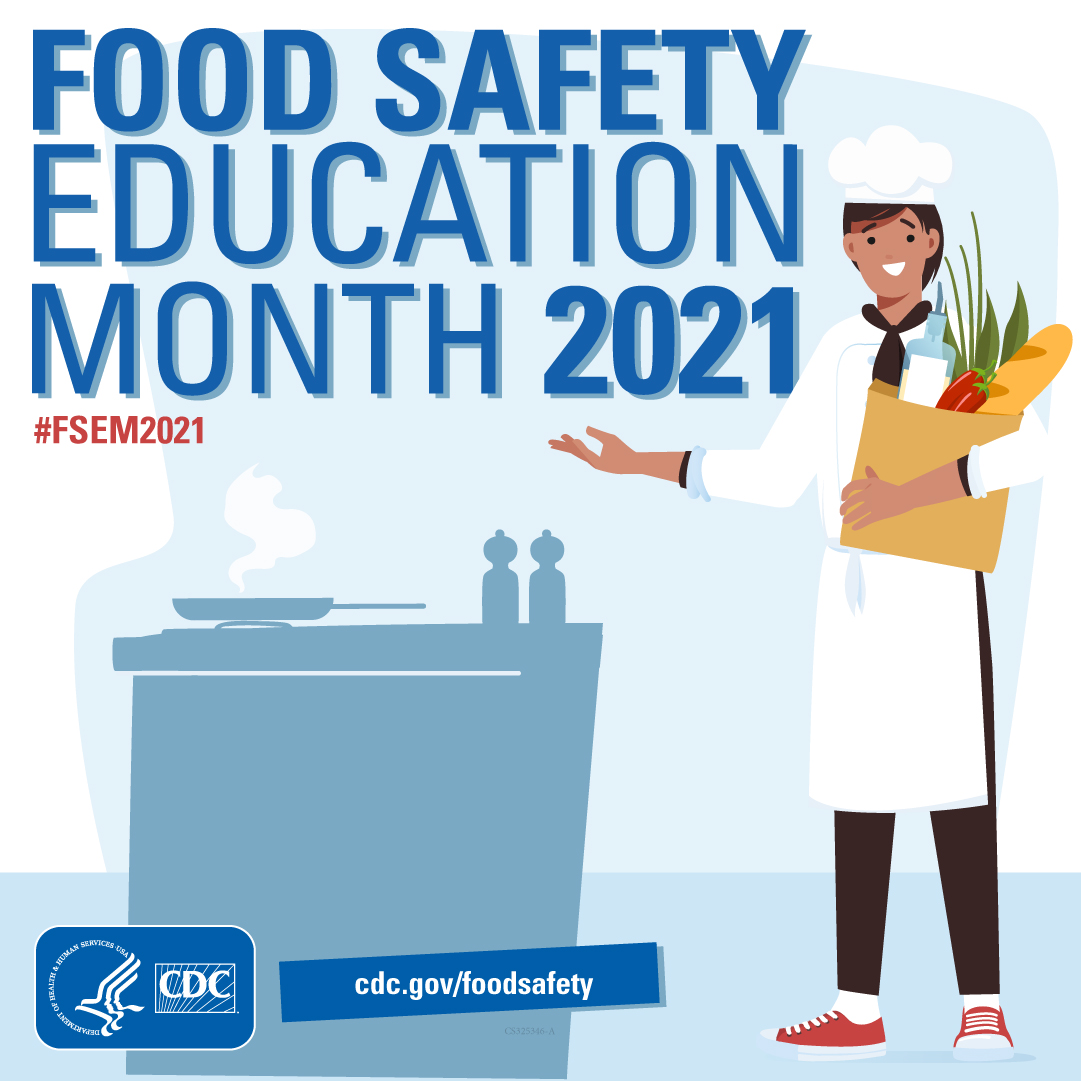
Whether you tried your hand at baking bread, followed a new recipe on Tik Tok, or even thought up some creative dishes “Iron Chef” style, the past 18 months have turned many more of us into home cooks. For Food Safety Education Month (FSEM) in September, we’re sharing advice on another important part of a tasty meal: How to prevent food poisoning when you cook at home.
Conozca al cocinero de seguridad alimentaria que le mostrará ideas para manipular y mantener sus alimentos seguros en la cocina de su hogar. During September, follow along on social media to see these tips and share them with others: @Foodsafetygov Twitter, FoodSafety.gov Facebook, @CDCgov Twitter, @CDC_NCEZID Twitter, CDC Facebook, and CDCgov Instagram. Look for the hashtags #FSEM2021 and #CDCFoodSafety.
Get Cooking: Food Safety Chef's 4-Step Recipe for Food Safety
- Clean: Wash your hands often. Clean your counters with hot soapy water, but don’t wash your chicken or meat! Washing raw meat, chicken, turkey, fish or eggs can spread germs to your sink, countertops, and other surfaces in your kitchen.
- Separate: Keep raw meat, chicken, turkey, seafood, and eggs separate from other foods. Use different cutting boards for uncooked meats and vegetables to avoid germs from raw meat contaminating food that won't be cooked before you eat it.
- Cook: Cook foods to a safe internal temperature to kill germs that could make you sick. Measure with a food thermometer because you can’t tell if food is fully cooked just by looking at the color.
- Chill: Refrigerate your leftovers and other perishable food within 2 hours of cooking. If it’s warmer than 90°F (32°C) outside, refrigerate leftovers after only an hour. Keep your refrigerator at 40°F (4°C) or below.
Spotlight on Salmonella
CDC estimates that Salmonella causes more foodborne illnesses in the United States than any other bacteria. Chicken is a major source of these illnesses, although Salmonella can contaminate a variety of foods. Large Salmonella outbreaks linked to ground beef have also occurred in recent years. Federal agencies and their partners are working along the food chain to prevent Salmonella illnesses associated with chicken and ground beef.
You can help prevent Salmonella and other foodborne infections by following food safety advice while preparing your favorite chicken and ground beef dishes. Try a recipe for spice-crusted chicken that includes food safety steps. Add these steps to all your recipes to make your meals delicious and safe.
Safety is an Ingredient for Everyone
Being a chef in your own home can be fun. During Food Safety Education Month, make room for food safety in your kitchen and help educate others about preventing food poisoning. Here are some resources you can use:
- Test Your Knowledge: Take this quiz!
- CDC's Food Safety Education Month Page
- Social Media Messages
- Social Media Graphics
- Videos
- Charts With Food Safety Guidelines
- CDC Feature: Key Facts About Food Poisoning [English] [Español]

